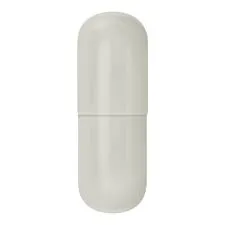
nov . 16, 2024 07:58 Back to list
methyl hydroxyethyl cellulose
Exploring Methyl Hydroxyethyl Cellulose A Versatile Polymer
Methyl hydroxyethyl cellulose (MHEC) is a non-ionic, water-soluble polymer widely used in various industrial and commercial applications. Derived from cellulose, the most abundant organic polymer on Earth, MHEC possesses unique properties that make it an essential ingredient in numerous formulations across different sectors, including construction, pharmaceuticals, cosmetics, and food production.
Chemical Structure and Properties
MHEC is synthesized by modifying cellulose through the introduction of methyl and hydroxyethyl groups. This structural modification enhances its solubility in water and provides a range of functional properties such as thickening, binding, film-forming, and emulsifying. The percentage of methyl content affects the viscosity and water retention capability of the polymer, making it customizable for specific applications.
The molecular structure of MHEC includes hydrophilic hydroxyl groups, which interact with water, leading to high water retention and gel formation. This property is particularly beneficial in construction applications, where MHEC is used in cement, tile adhesives, and plaster formulations to improve workability and extend the open time before setting.
Applications in Construction
In the construction industry, MHEC is prized for its ability to enhance the performance of various materials. When added to mortars and plaster, it improves the materials' consistency and stability, leading to easier application and better adhesion to surfaces. The water retention capability of MHEC ensures that the mortar remains workable longer, allowing for adjustments during application and reducing the risk of cracking once the material cures. Additionally, MHEC can help achieve better mechanical strength and durability in building materials.
Use in Pharmaceuticals
methyl hydroxyethyl cellulose

In the pharmaceutical field, MHEC serves as a thickening agent and controlled-release agent in drug formulations. Its non-toxic nature makes it suitable for use in medicinal products, where it can assist in modifying the release rates of active pharmaceutical ingredients (APIs). Furthermore, MHEC’s film-forming properties are leveraged in the production of coatings for pills and tablets, providing protection, stability, and improved bioavailability of the medication.
Role in Cosmetics and Personal Care Products
MHEC is also widely utilized in the cosmetics industry, where it acts as a thickener, stabilizer, and emulsifier in lotions, creams, and gels. Its ability to impart a silky, smooth texture enhances the sensory experience of cosmetic products. Additionally, MHEC can help to create a more uniform distribution of active ingredients throughout the formulation, improving the overall effectiveness of skincare products.
Food Industry Applications
In the food industry, MHEC is often used as a food additive, where it serves as a thickener, emulsifier, and stabilizer. It is commonly found in sauces, dressings, and dairy products, where it enhances texture and mouthfeel. The versatility of MHEC allows it to be used in both low-fat and high-fat formulations, improving the stability and quality of food products while catering to the growing demand for healthier options.
Conclusion
Methyl hydroxyethyl cellulose is a multifaceted polymer that has found its place in a multitude of industries due to its remarkable properties. Its ability to function as a thickener, binder, film-former, and emulsifier makes it an invaluable ingredient in construction materials, pharmaceutical formulations, cosmetics, and food products. As industries continue to evolve and seek innovative solutions, the demand for MHEC will likely increase, cementing its role as a key player in various applications. Whether it is improving the strength of a building material or enhancing the texture of a skincare product, MHEC's adaptability ensures its relevance in our daily lives.
-
tile-bonding-additives-for-stronger-bonds
NewsAug.22,2025
-
construction-grade-rdp-for-wholesale-needs
NewsAug.22,2025
-
trusted-wholesale-hec-partners
NewsAug.22,2025
-
hec-solutions-for-industrial-excellence
NewsAug.22,2025
-
construction-additives-need-hpmc-essentials
NewsAug.22,2025
-
hpmc-versatile-cellulose-ether-for-industries
NewsAug.22,2025







